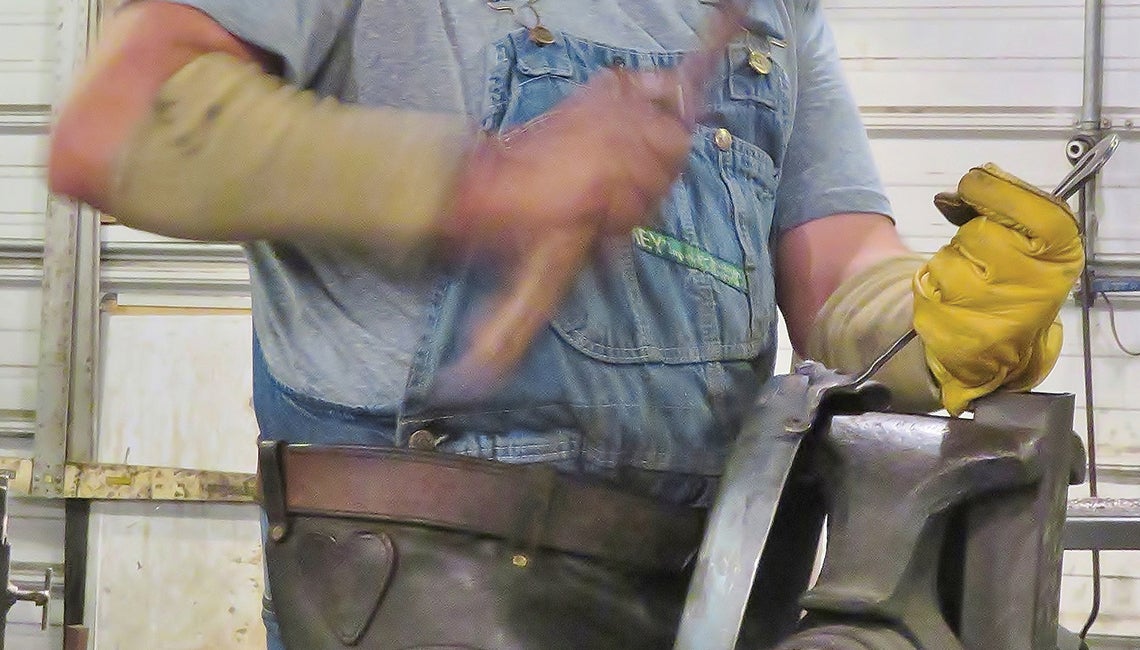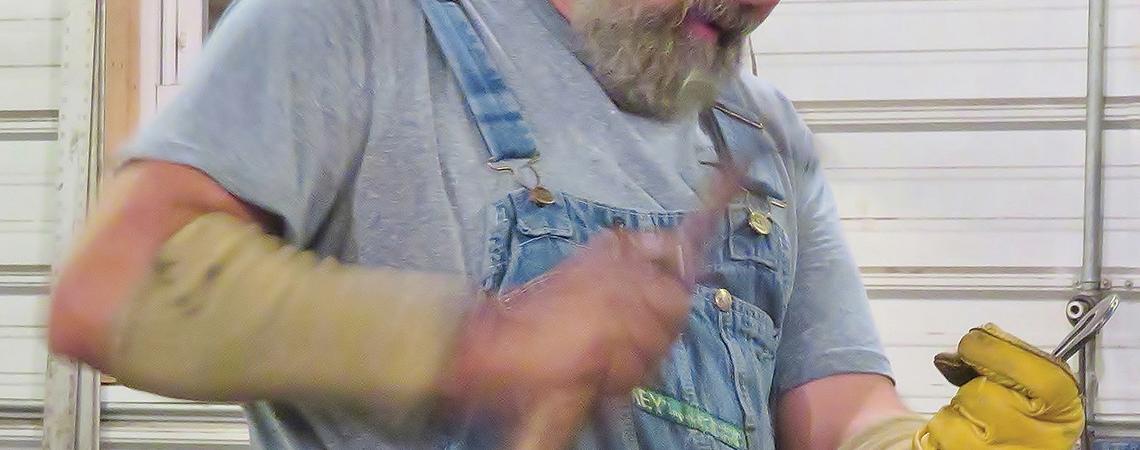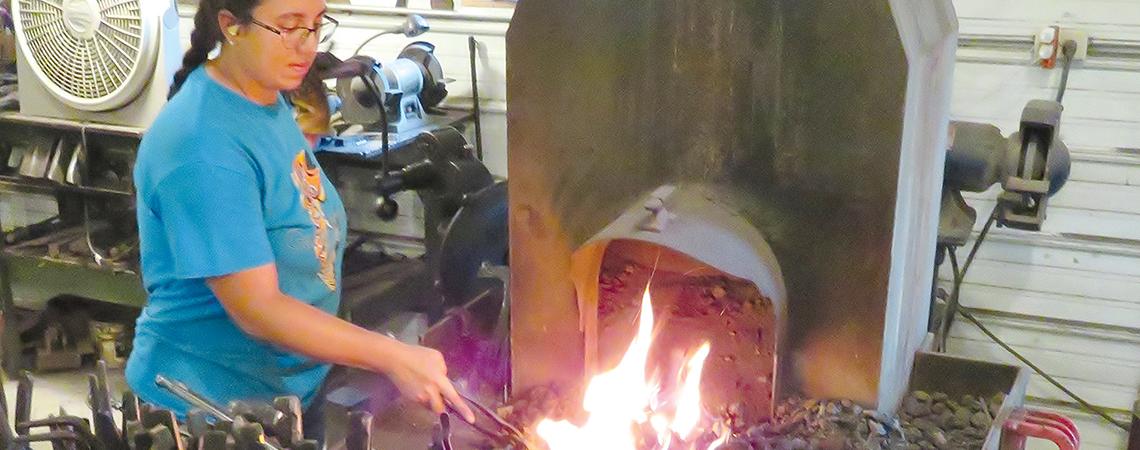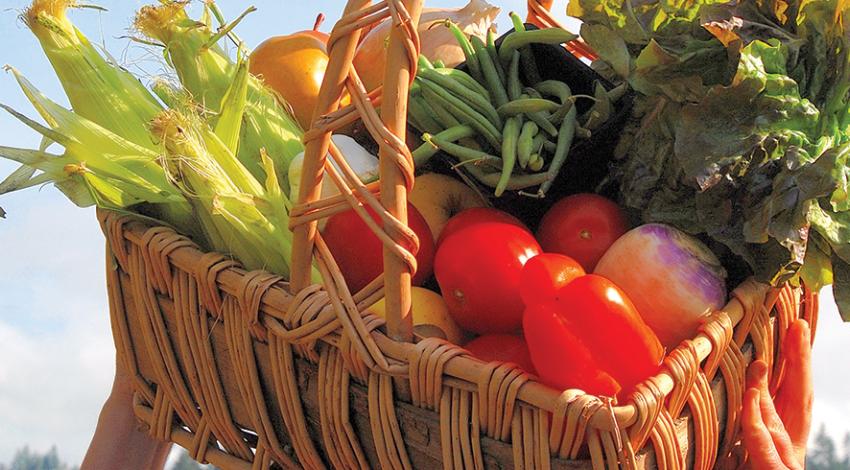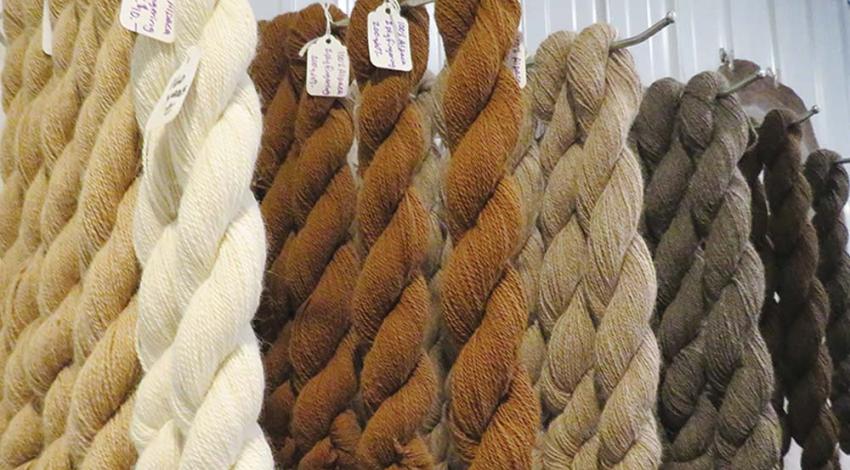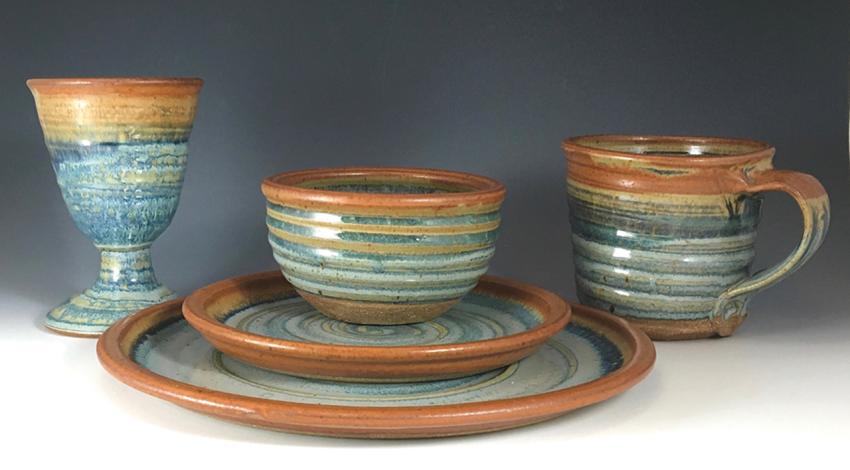A woman who had purchased a skillet from Lockhart Ironworks recently asked Doug Lockhart if he could add a helper handle to her cookware. The veteran blacksmith, a South Central Power Company member, gladly obliged. “I enjoy making things like they did in the olden days,” says Lockhart, “when people actually could come into a shop and talk to the blacksmith.”
Doug Lockhart caught the blacksmithing bug while he was in college.
Lockhart’s shop sits amid 83 acres of woods and fields on his farmstead, 10 miles northeast of Logan. He and his wife, Berta, live in an 1824 log farmhouse; keep ducks and goats for eggs, meat, and milk; raise some hay; and harvest their trees for lumber that they cut in the farm’s sawmill. While a metal pole barn houses the ironworks’ forges and anvils, the smithy’s gift shop was once a dog kennel before Lockhart upcycled it into a showcase for the wide variety of hooks, fireplace pokers, knives, cooking utensils, and other items that he and his family — son Benjamin Lockhart, daughter Annah Lockhart, daughter Danielle Chamberlain, and son-in-law David Chamberlain — handmake.
“Our kids were all raised in the shop and taught forging skills,” says Lockhart. “They’re also cross-trained on every station in the shop so that anybody can do any job.” Danielle, for example, started working there at age 12, and when she turned 18, he sold her the Ironworks for one dollar. “I did that so when I’m not around anymore, the kids can go back into the shop and continue the business without any courts involved,” he says.
Lockhart’s introduction to blacksmithing came in 1981, when he was studying to be a living-history interpreter at Salem College in West Virginia. The curriculum’s 18th- and 19th-century occupations included printing, carpentry, and basketmaking, but Lockhart recognized his calling the first time he saw a blacksmith hammering hot metal. He was all in. “That was the day I started eating coal for breakfast,” he recalls.
Blacksmithing dates to the ancient Iron Age, and in medieval Europe, it was considered the king of all the trades because, unlike a mason, weaver, or glassblower, only a blacksmith can make his own tools.
Because Lockhart strives to preserve those age-old traditions and techniques even while he practices them, he also operates the Southern Ohio School of Blacksmithing.
“An unbelievable amount of things a blacksmith knows how to do are being forgotten or not handed down,” Lockhart says. “My passion is passing my knowledge on to my kids and students.”
Although he suspended classes because of COVID-19, students typically receive a full day of instruction at Lockhart Ironworks, where they finish four projects. Of course, blacksmiths always strike while the iron is hot, so mastering the scorching 3,000-degree fires is a must. “You’ve got to get close to that dragon in the forge and can’t be afraid,” says Lockhart. “If you learn to work with fire, it becomes your ally, and you can create something.”
During 40 years of blacksmithing, Lockhart’s creativity has ranged from restoring historic iron bridges to designing a National Christmas Tree ornament to fashioning light fixtures for Disney World’s Beauty and the Beast Castle. He also reproduced vintage sconces at the Ohio Governor’s Residence and made two state-seal-inspired sculptures — a sheaf of wheat and cluster of arrows — for the residence’s Heritage Garden. Besides iron, Lockhart works in copper, bronze, and brass, and he chose carbon steel for Lockhart Ironworks’ line of heirloom-quality skillets.
“Only a handful of blacksmiths in the United States currently make cookware, and we spent three years consulting with chefs and developing our skillets,” says Lockhart.
Carbon steel is lighter and more durable than cast iron and yields a smooth, naturally nonstick cooking surface. “Put just a small amount of oil in the pan, and a fried egg practically floats on the surface,” says Lockhart. In addition, skillet handles are attached with rivets and have a low-enough pitch to easily fit in an oven. Every Lockhart skillet comes with not only care instructions but also a thank-you card featuring a photo of the entire family of blacksmiths. “I have each of the kids sign the card,” says Lockhart. “I want customers to know who made their cookware, and that it’s made in the USA.”
To learn more, view videos, and shop for cookware and other items, visit Joe's website. Lockhart Ironworks is open to the public, but visitors should call ahead.
